Kongsberg EVOTEC: All about A-Frames
Making ships gear can require deep pockets. Ask Kongsberg Evotec AS management. A savage turn of fortunes for offshore surveyors has cooled orders for handling machinery from seismic vessel owners. As much as 80 percent of the survey business has, in places, evaporated and left widespread disbelief. To counter the trend, this company whose largest shareholder is super supplier Kongsberg Maritime is ready to turn to offshore shipping despite the presence locally of well-connected rival outfitters with competing designs.
Not long ago, the owners of an offshore construction vessel awaiting sea trials told this writer that the two ROVs aboard ship would bring in all the earnings they would need in the first year of waiting for an expected contract with a major oil company.
The ship’s two ROV decks took on an importance out of all proportion to the vessel’s future earnings picture. So, too, did the critical handling equipment, as the ship made ready to survive solely on subsea inspections of mooring cables.
Fast-forward eight years, and Kongsberg Evotec management say they, too, will look to ROVs, especially, to earn while the market for handling equipment for seismic survey arrays takes a major dip. Seismic has been 80 percent of the fledgling Kongsberg business’s revenue.
“The (financials) are red and Kongsberg as shareholder would like to change that,” says Kongsberg Evotec president, Jan Emblemsvåg. He adds, somewhat dramatically, “We are in a turnaround situation.”
Sales to survey companies dried up after agreeing in 2013 to outfit the giant, 104-meter-long Ramform type seismic vessels owned by customer PGS. The Ramforms can haul 20 kilometers of streamer, or sensor-dense listening cables drawn behind the vessel during surveys. The towed array is “the largest moving object in the world,” and Evotec provided the back-deck handling solution. In 2012, two Sanco vessels, the Swift and Sword, were outfitted by Evotec, and equipment for another Ramform-class vessel will be delivered in April 2015 before the vessel heads straight to the Barents Sea, a vast area but one made potentially less endless by sanctions on Russian offshore oil and gas. The economic measures appear to have left their mark on a global business.
“Exploration is under more scrutiny right now,” said Lukas Daul, an offshore analyst for the financiers ABG Sundal Collier in Oslo.
“Oil companies are in cost-cutting mode, and exploration is the low-hanging fruit,” he adds.
Daul specializes in a rig market that depends on seismic success. Survey vessels, like rigs, are a key bellwether for offshore drilling fortunes. Daul said exploration, as opposed to production drilling, still offers oil companies “immediate flexibility” when looking at costs.
“CAPEX cuts in exploration have been much bigger than the overall decline (in offshore energy) at the moment,” he confirms.
All About A-Frames
Emblemsvåg hardly needs confirmation of a drought in available survey vessels to equip, and he has Evotec nudging itself toward still-growing offshore fleets, especially construction vessels. Apart from a couple of recent “2D” seismic contracts with COSL, it is a handful of ROV launch-and-recovery contracts that now offer cheer and direction. While seismic is mostly about winches, tension blocks and cable management, contracts for ROV handling seem to lean heavily on A-Frame sales which also bring business in winches and control systems.
Emblemsvåg, a former shipyard man from Vard, says A-frames save deck space more than a crane might at “three stories tall instead of four”. Cranes, it is understood, require better weather “in general,” so a better operating window would seem possible with the A-Frame.
Promising Orders
In the Evotec warehouse, company vice-president for offshore supply and subsea, Jon Olav Kopperstad, says A-Frames for the ROV handling aboard six Brazilian CMO Offshore vessels have just gone out, and Shell as charterer is understood to have generated a large order for an offshore construction vessel being built at Remontowa shipyard in Poland. This OSV will be fitted with a 12-ton A-Frame, winch and drive control system.
“Costs are improving, and now there’s extra value for customers in active heave-compensating for deepwater,” Kopperstad asserts, adding that a 650 kW drive offers more power at key intervals for better lift. He confirms the offshore focus is for ROV handling systems for the likes of Technip, Oceaneering Swire Seabed, Olympic Shipping or Deep Ocean. Some “10 to 20” installations a year seem to be needed to keep things viable
“If you ask me, next month I think that (customer) list will be double,” said Kopperstad.
In the wings, Ewotec is understood to be readying the release of a new inspection, maintenance and repair handling system with a tower, cabin and K-Master workstation. The rest is “hush-hush”.
Surveying Hope
“Thirty vessels (outfitted per year) should be the goal for us,” Emblemsvåg said. Right now, he’ll try creating a little seismic opportunity in the Evotec labs.
“Now there’s time for R&D and for systems derived from R&D which we hope will generate future growth,” he says. After all, Evotec started out in 2006 as a purely engineering outfit.
“Seismic came up as an opportunity. It’s a very volatile market, but that’s why we’re working on offshore now, too,” he said.
Seismic is still hot in Brazil, he confirms, but an oil company focus on costs worldwide has clipped orders short, starting with the multi-client hires by oil companies pooling their money. About a third of offshore seismic earnings worldwide come from companies paying this way for detailed geological knowledge of their offshore licenses. It’s the crimping of this “good will” seismic that appears to be hurting orders. A further draining of order books has been flagged by a barrage of market messages. PGS Geo-Services, a relative giant, has announced it will sell or scrap two vessels to save $150 million in CAPEX over two years.
Orders for offshore construction vessels, meanwhile, have kept apace, promising more work for Evotek’s ROV offering. “Offshore service and subsea are increasing (in importance) rapidly,” said Emblemsvåg. It’ll be A-Frame versus crane going forward.
(As published in the November/December 2014 edition of Marine Technology Reporter - http://www.marinetechnologynews.com/Magazine)




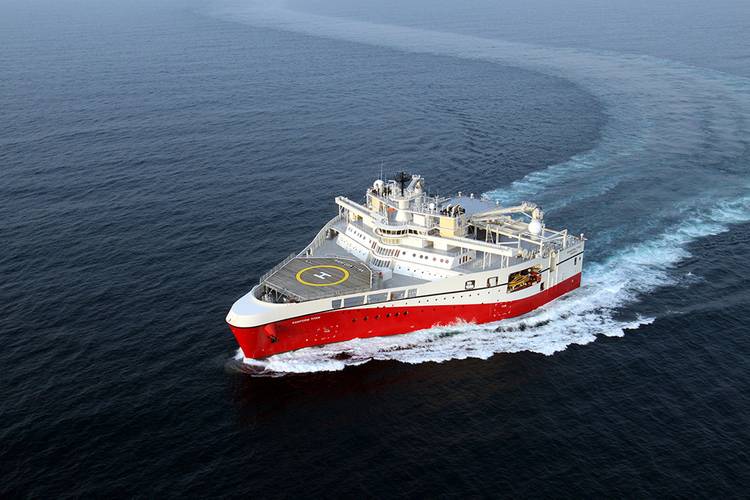
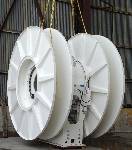
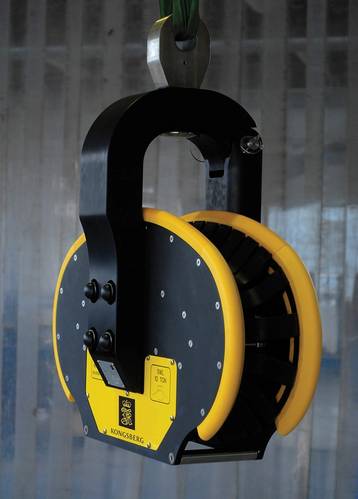
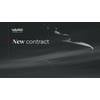
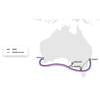
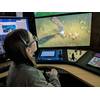
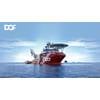
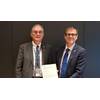









 December 2025
December 2025



